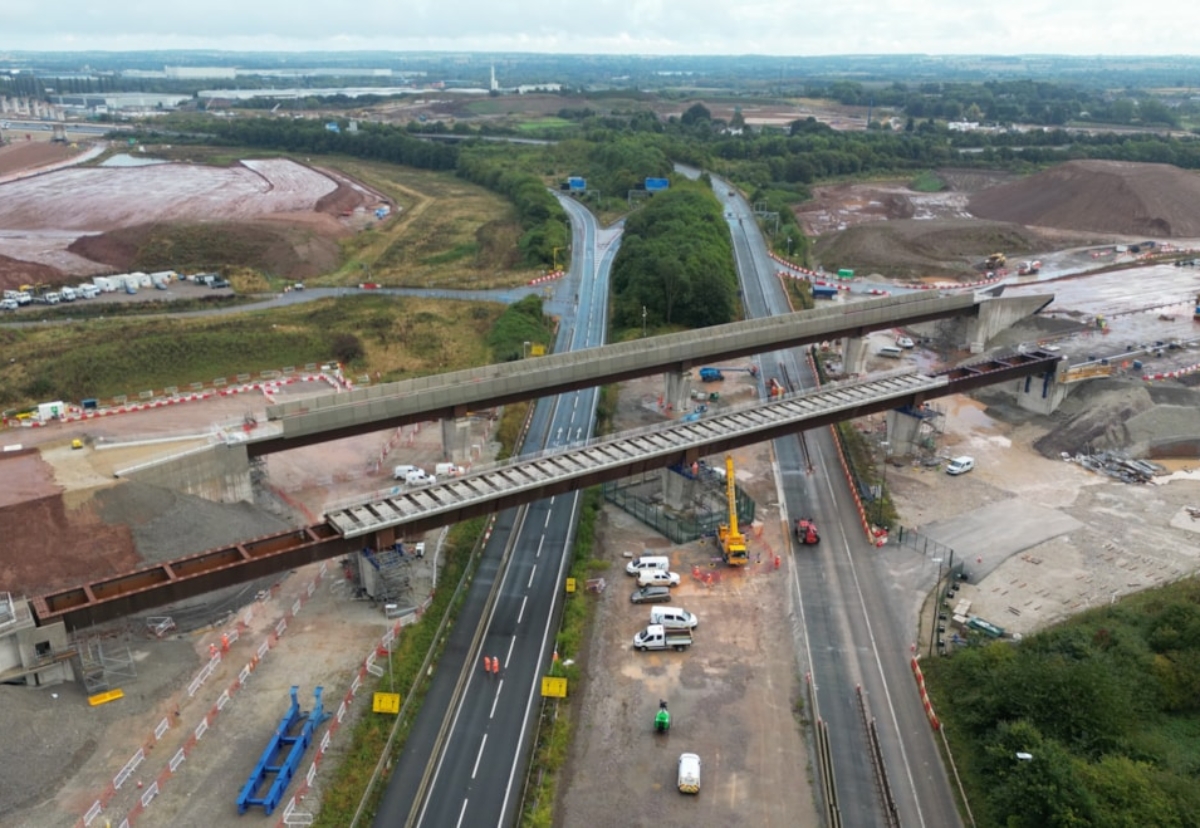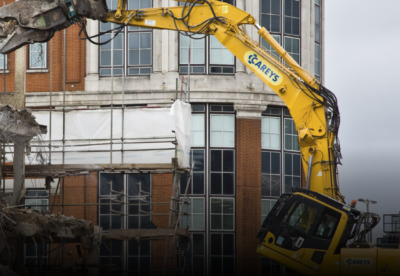The ‘push’ to move the 158-metre-long West Link Viaduct into its final position over both westbound and eastbound motorway link roads took a total of 11 hours.
Main works contractor Balfour Beatty VINCI (BBV) completed the work quicker than planned allowing the motorway link roads to be reopened 6.5 hours ahead of schedule.
The viaducts are part of a group of 13 which make up HS2’s triangular Delta Junction. This section of the railway enables high speed trains to travel between London, Interchange Station in Solihull and Birmingham Curzon Street Station.
In June, the first 84 metre section of the composite viaduct was moved to its halfway position. Since then, three further steel girders were welded to the back of the first section and 38 precast concrete slabs were installed to complete the 158-metre-long structure, which has now been moved over both link roads.
The parallel ‘East Link Viaduct’ was moved into place using an identical two-stage process during two weekend operations in February and April this year. This viaduct is currently being prepared to be brought into use as an internal haul road by the end of December, to move material from Bromford Tunnel to the Delta Junction, taking thousands of lorries off the local road network.
The four operations were delivered by a team of 25 people from specialist steelwork company Victor Buyck Steel Construction (VBSC), working on behalf of BBV, using a push-pull jacking system which gives greater flexibility during the launch operation.
JoseLuis Preciados, Senior Project Manager at Balfour Beatty VINCI said: “This final viaduct push is a significant milestone in our construction of HS2’s Delta Junction. I’m incredibly proud of the BBV team, who’ve worked tirelessly throughout this year to ensure each of these complex operations were planned and delivered with precision.
“Each viaduct deck was built offline and moved into position over a weekend closure of the highway, drastically reducing the impacts on road users. We’ve worked in collaboration with our partners National Highways throughout the entire process, to make sure that this activity was delivered safely and efficiently.”
Tibo Suvée, Project Manager at Victor Buyck Steel Construction added: “This has been a complex eight-month operation, and the first time our push-pull jacking system has been used in the UK.
“The technique provides greater flexibility during the launching operation by allowing the bridge to be moved backwards or both ways if needed.”









.gif)





































 (300 x 250 px).jpg)







